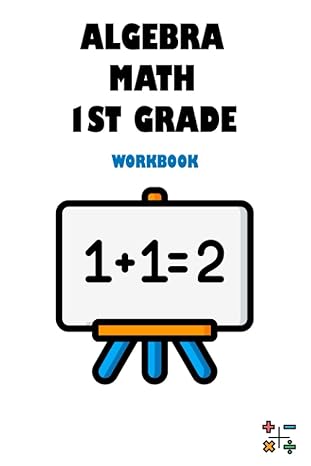Answered step by step
Verified Expert Solution
Question
1 Approved Answer
MATH 115A Number Theory, HW7 1. R4.4.2 2. R4.4.4 3. R4.4.8 4. R4.4.10 The next set of exercises unpacks and veries the details of Don
MATH 115A Number Theory, HW7 1. R4.4.2 2. R4.4.4 3. R4.4.8 4. R4.4.10 The next set of exercises unpacks and veries the details of Don Zagier's one sentence proof that every prime p 1 (mod 4) is a sum of two squares. Let T be a set. An involution on T is any function : T T such that is its own inverse, i.e. 2 (x) = ((x)) = x for all x T . Let p be a prime such that p 1 mod 4. Dene S := {(x, y, z) N3 | x2 + 4yz = p}. Dene the function by :SS (x + 2z, z, y x z) (x, y, z) (x, y, z) := (2y x, y, x y + z) (x 2y, x y + z, y) if x < y z . if y z < x < 2y if x > 2y 5. Show is an involution. 6. Show has exactly one xed point. That is, show there is exactly one triple (x, y, z) N3 such that (x, y, z) = (x, y, z). This is where you will need to use the fact that p is a prime of the form 4k + 1. [Hint: the xed point is (1, 1, k).] 7. Show that if is an involution on the nite set T with an odd number of xed points, then the number of elements in T , denoted |T |, is odd. 8. Show that if T is a nite set with an odd number of elements, and is an involution on T , then there exists at least one element x T such that (x) = x. In other words, if |T | is odd and is an involution on T , then has at least one xed point. 9. Show S is nite. 10. Show that :SS (x, y, z) (x, z, y) is an involution. 11. Using the previous exercises, show has a xed point. Conclude that every prime p 1 (mod 4) can be written as a sum of two squares. 1
Step by Step Solution
There are 3 Steps involved in it
Step: 1

Get Instant Access to Expert-Tailored Solutions
See step-by-step solutions with expert insights and AI powered tools for academic success
Step: 2

Step: 3

Ace Your Homework with AI
Get the answers you need in no time with our AI-driven, step-by-step assistance
Get Started


